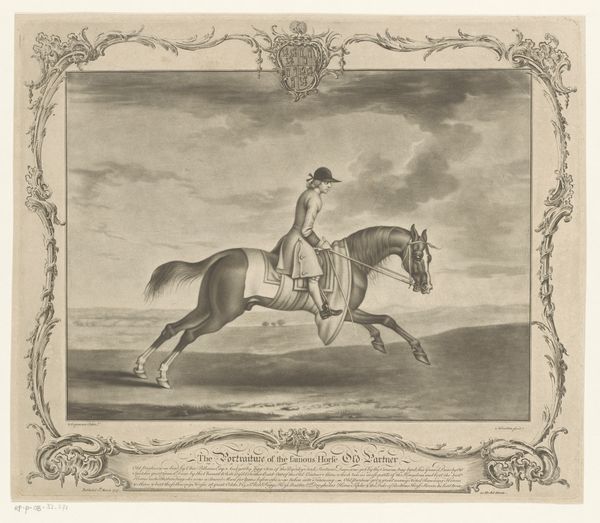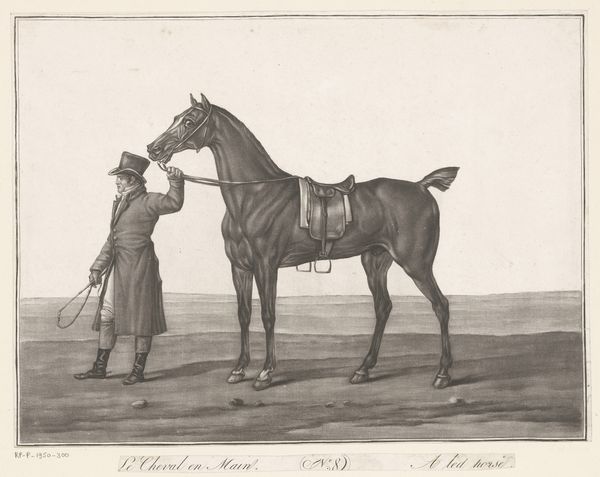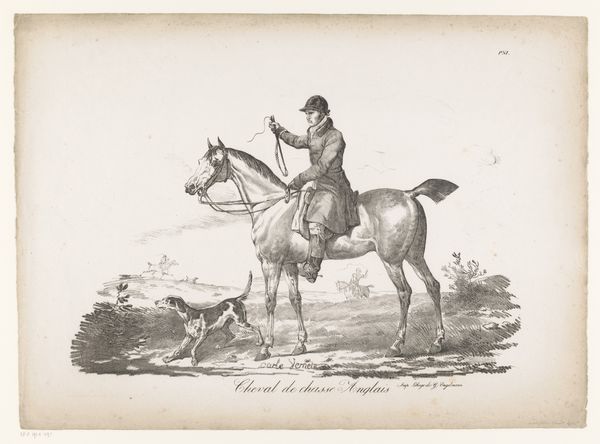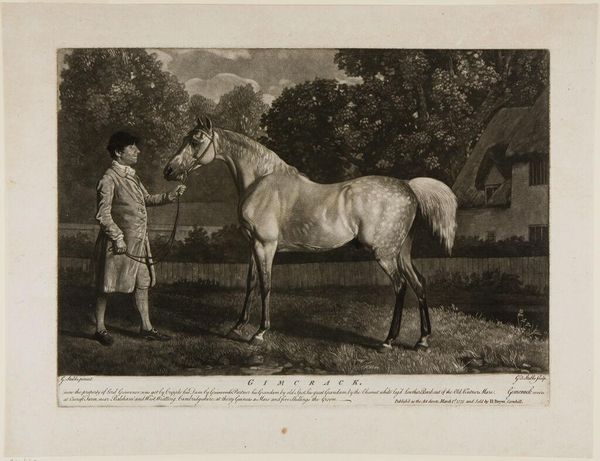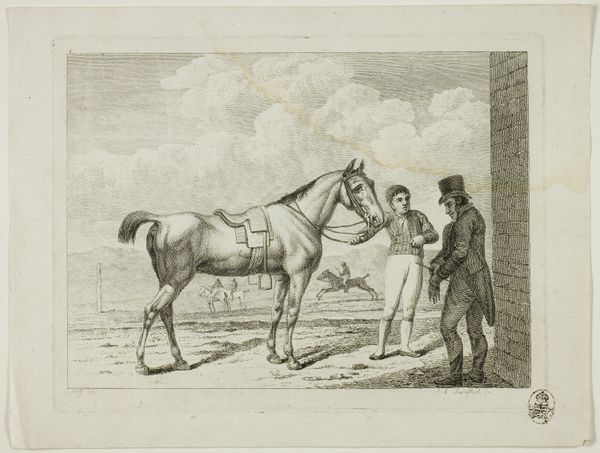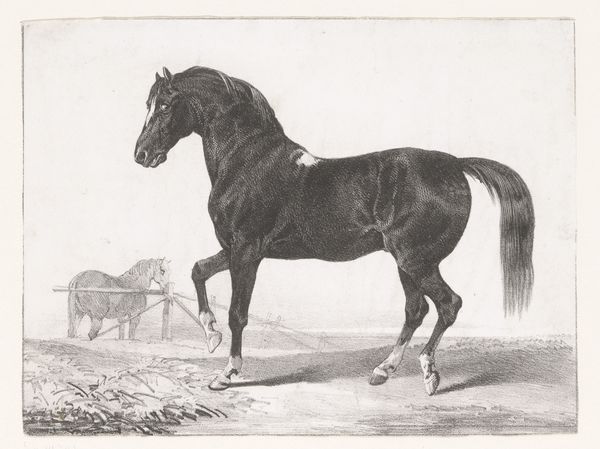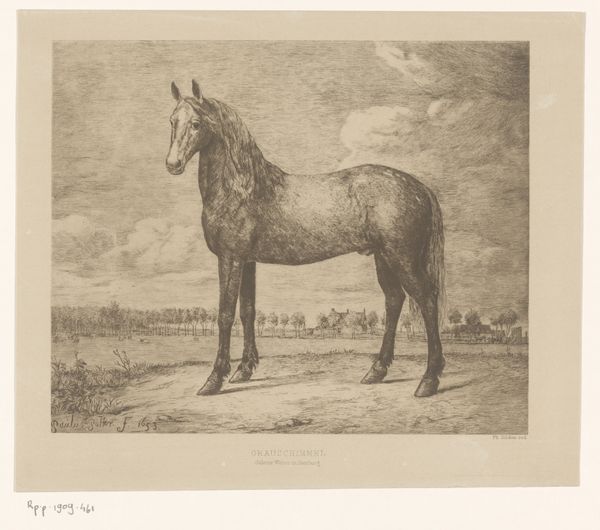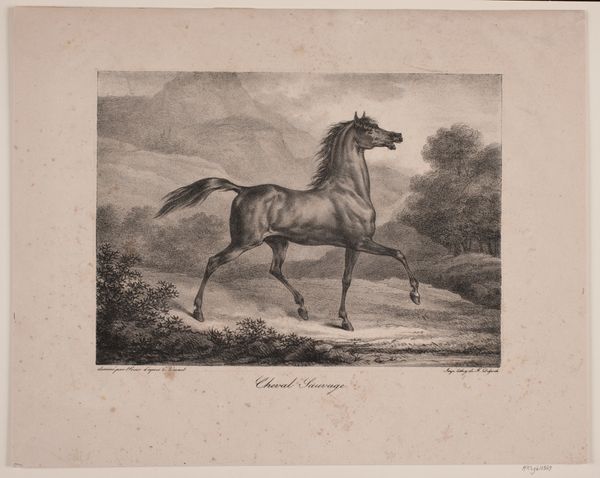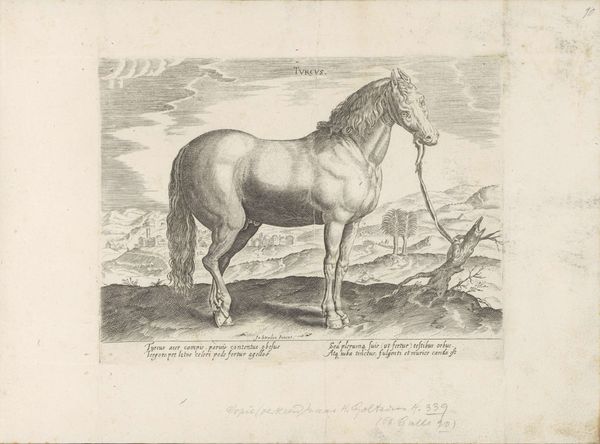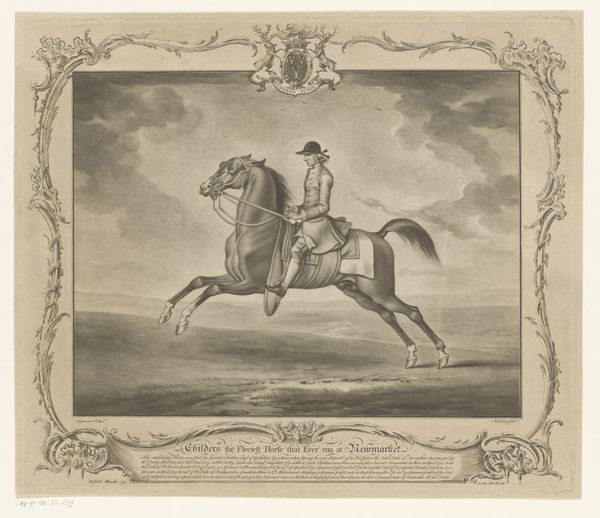
print, engraving
#
portrait
#
baroque
#
animal
# print
#
old engraving style
#
landscape
#
genre-painting
#
engraving
Dimensions: height 253 mm, width 355 mm
Copyright: Rijks Museum: Open Domain
Editor: Here we have Richard Houston’s engraving, "Racepaard met jockey", placing it somewhere between 1731 and 1775. The horse dominates the composition, possessing an almost regal quality. The jockey seems diminutive in comparison. How do you interpret this work? Curator: The horse certainly stands as the primary symbol here. Beyond just being a representation of an animal, it’s charged with significance. Think about the history embedded in the image. This isn't simply a horse; it is a racehorse, tied to aristocracy, wealth, and leisure. The jockey, then, becomes a figure of service and class distinction, literally holding the reins of power. Do you see how the size differential underscores this dynamic? Editor: Absolutely, it’s hard to miss. But what about the landscape itself? It seems deliberately understated. Curator: Indeed. The subdued landscape acts as a stage, highlighting the central figures and allowing them to command our attention. It avoids distraction, guiding our gaze back to the cultural symbolism inherent in the relationship between the horse, the jockey, and, by extension, the societal structure they represent. It's a world of inherited status. Editor: That makes sense. The emphasis on the horse as a status symbol… It's something I hadn’t fully considered. I was mostly thinking about aesthetics, but you’ve shown me so much more in terms of historical and societal symbols. Curator: And you've reminded me that aesthetics serve as a powerful conveyor of these underlying stories. It's a dialogue between image and context that allows us to uncover so much.
Comments
No comments
Be the first to comment and join the conversation on the ultimate creative platform.
